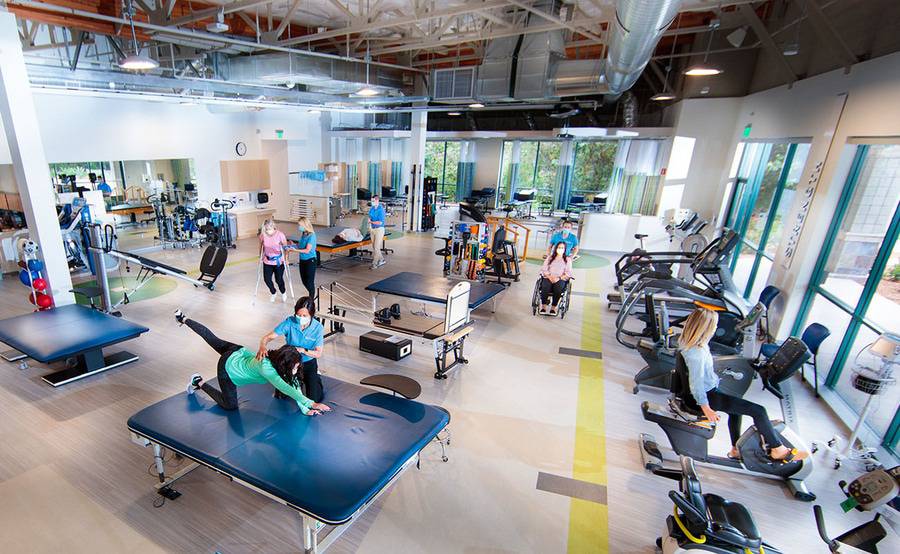
The appropriate rehab center can be a decisive factor in the treatment process being successful or a failure when a person seeks to get free of drugs or alcohol misuse. Providing more than just regular treatment and medical services, the entertainment and setting of a rehab facility can change how an individual feels during treatment. Thus, the quality of life can be improved. From specially equipped living spaces to balancing opportunities, leisure facilities can assist a patient’s recovery and provide a tool for lasting wellness.
The features below are only some of what you should think about choosing a rehab center:
Medical Staff and Counseling Services: The most crucial element is the group of qualified medical professionals and counselors who work in any Orange County rehab center. Look for inversion centers that have doctors, psychiatrists, psychologists and psychotherapists certified by their respective licensing authorities with specializations in treating addiction-related conditions. Their knowledge enables correct medical manipulations, therapeutic prescriptions, and specialized, personalized therapist approaches based on individuals.
Detoxification Services: In particular, establishments supervised by medical professionals in providing detox services are integral parts of the overall healthcare system, also targeting people with substance addiction. Although medically managed detox does not permanently remove the desire to continue drug use, it helps in managing withdrawal symptoms safely and comfortably by decreasing the chances of complications and relapse at the initial stage of the recovery process.
Therapeutic Programs: Successful rehab facilities are those that are equipped with a bevy of evidence-based therapies that are devised with the likely aim of assisting people with an addiction to overcome the harrowing tri-aspects of physical, psychological and emotional struggles that all people with an addiction are compelled to deal / or are prone to endure. The interventions may, therefore, encompass different things such as cognitive-behavioural therapy (CBT), dialectical behaviour therapy (DBT), motivational interviewing, family therapy, group therapy, and experiential types of therapy that can include art therapy, yoga and meditation.
Dual Diagnosis Treatment: A great proportion of those in active addiction suffer from some kind of co-occurring mental health disorders that include depression, anxiety, and Post-Traumatic Stress Disorder (PTSD), among others. The actual integrated rehab center must provide several services at the very fee total for the co-occurring disorders, considering both mental health and substance use issues.
Individualized Treatment Plans: Recovery is as unique as a person, so select a rehabilitation center that designs personal treatment and care plans for every service user. A center makes comprehensive assessments per clients’ requirements, choices have been tailored to their taste, and a set of goals helps to receive more focused and efficient treatment.
24/7 Medical and Clinical Support: Constant support and supervision remain vital during the beginning of the recovery stage when people may feel seriously some uncontrollable cravings, emotional distress or medical emergencies. Check out those places that give medical and clinical aid round-the-clock in order to avoid delays or ordeals in case of any medical condition.
Relapse Prevention Programs: A solid relapse prevention plan trains clients with coping techniques, tactics, and networks, as well as support groups for balancing a good life after treatment. The rehabs that primarily teach relapse prevention skills have aftercare planning and organize group sessions for additional support, which can improve long-term recovery.
Holistic Approach: Moving beyond the definition of only providing conventional therapy and medicine for the patient, holistic amenities can contribute to the individual’s overall health as they continue the recovery process. These may cover a broad spectrum of therapies, from dietary counseling to fitness and exercise programs to acupuncture, massage, and mindfulness. Holistic medicine looks at the relationship between general health, spiritual health and mental cognition for the sake of total harmony and prosperity.
Family Involvement and Education: A pattern of drug abuse not only impacts the individuals themselves but quite often also the addiction sufferer’s family members or friends. A rehab center that involves family members as participative factors in the treatment process through joint family therapy sessions, education programmes, and support groups can strengthen the relationships, improve communication, and promote recovery across the family unit, which is crucial for long-term recovery.
Comfortable Accommodations: Although living conditions might seem to be trivial things to consider, the extent of the impact these machinations could have on the totality of a person’s experience during rehab, nonetheless, is undeniable. Shop for the centers with rooms containing luxury furniture and the necessary amenities like private apartments, fencing, recreational areas and green space after creating comfort in the treatment stay.
Final Thoughts
The critical features in choosing a rehab center are the medical treatment and therapy, and most facilities should be enhanced to improve the quality of life and recovery. While treatments are a vital part of SO’s journey, the long-term recovery results of surface-level treatments are usually the same as before. However, a comprehensive plan that considers individual needs, offers full spectrum therapeutics, promotes a lifestyle focused on holistic well-being, involves family, friends, and community support, and provides ongoing support work extremely well for long-term success.

